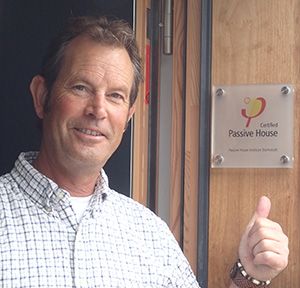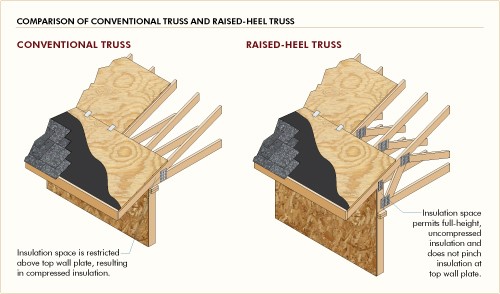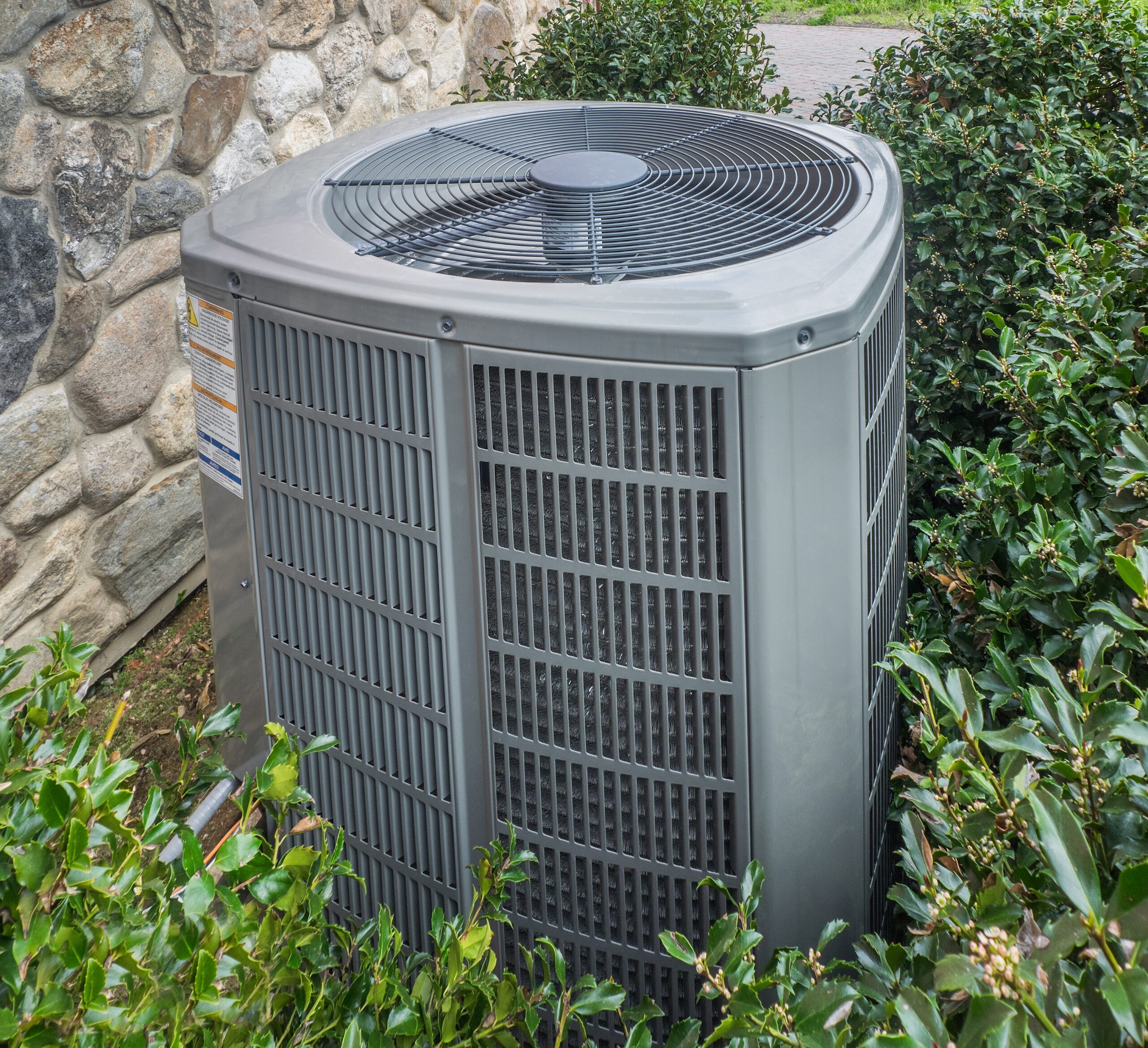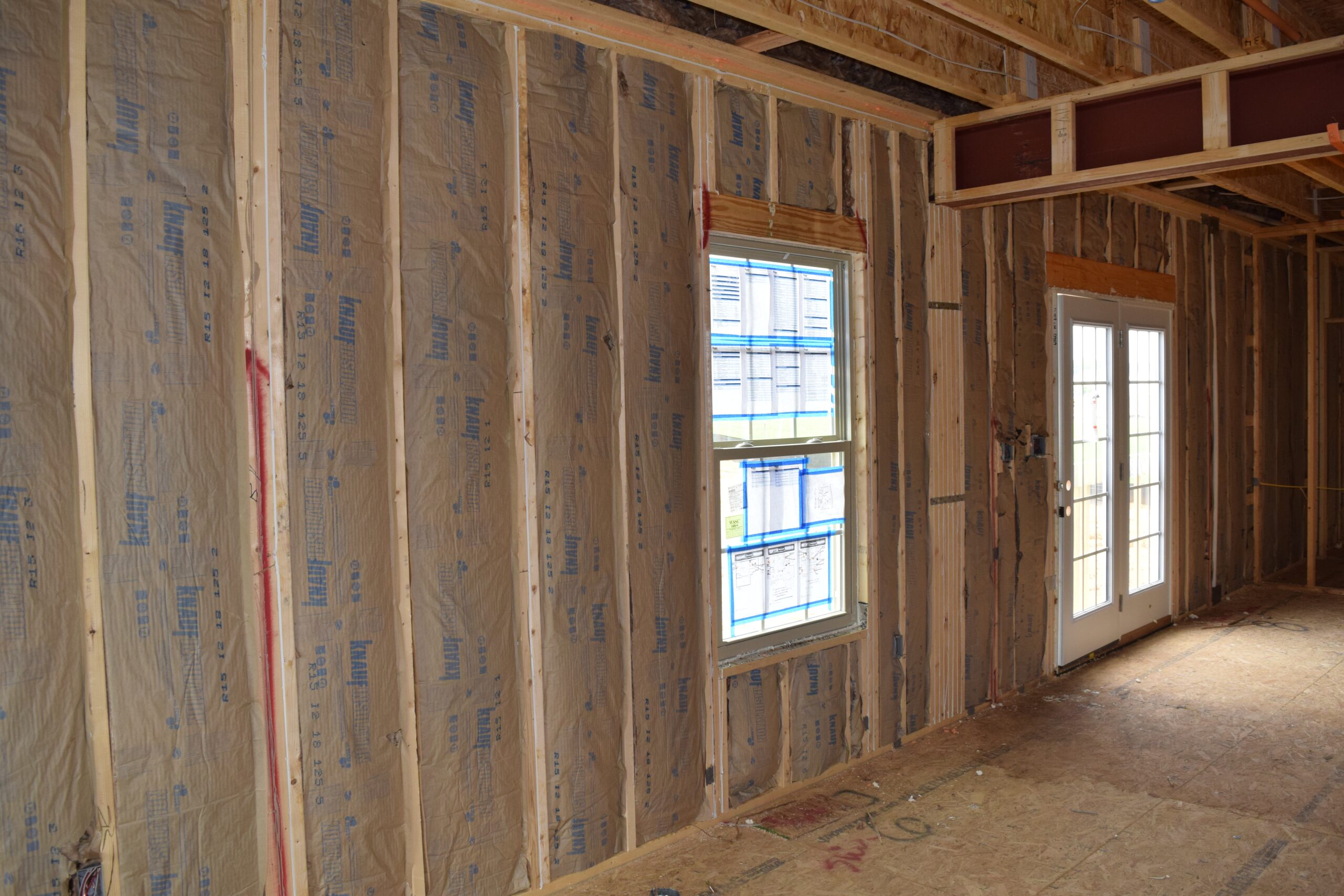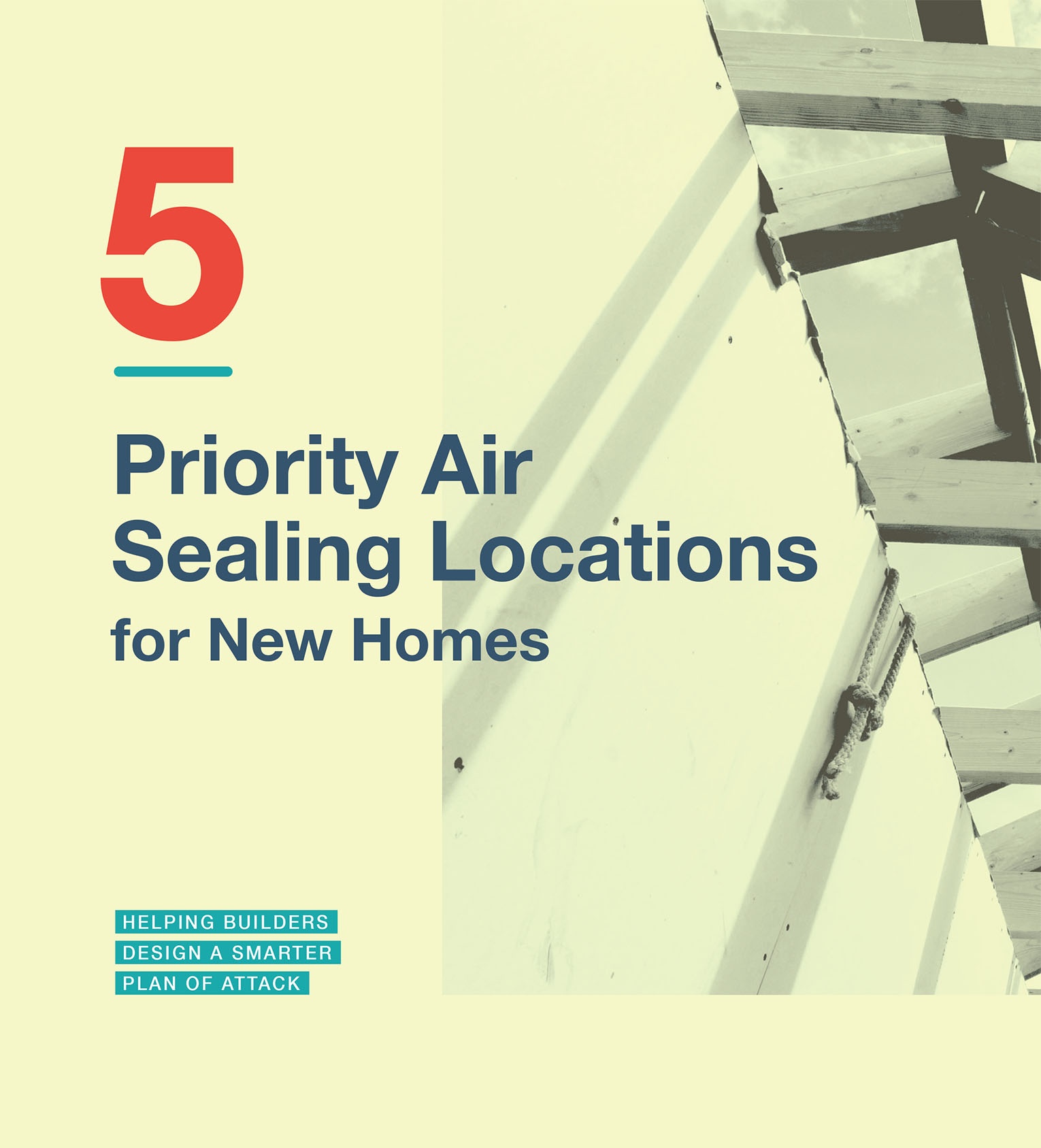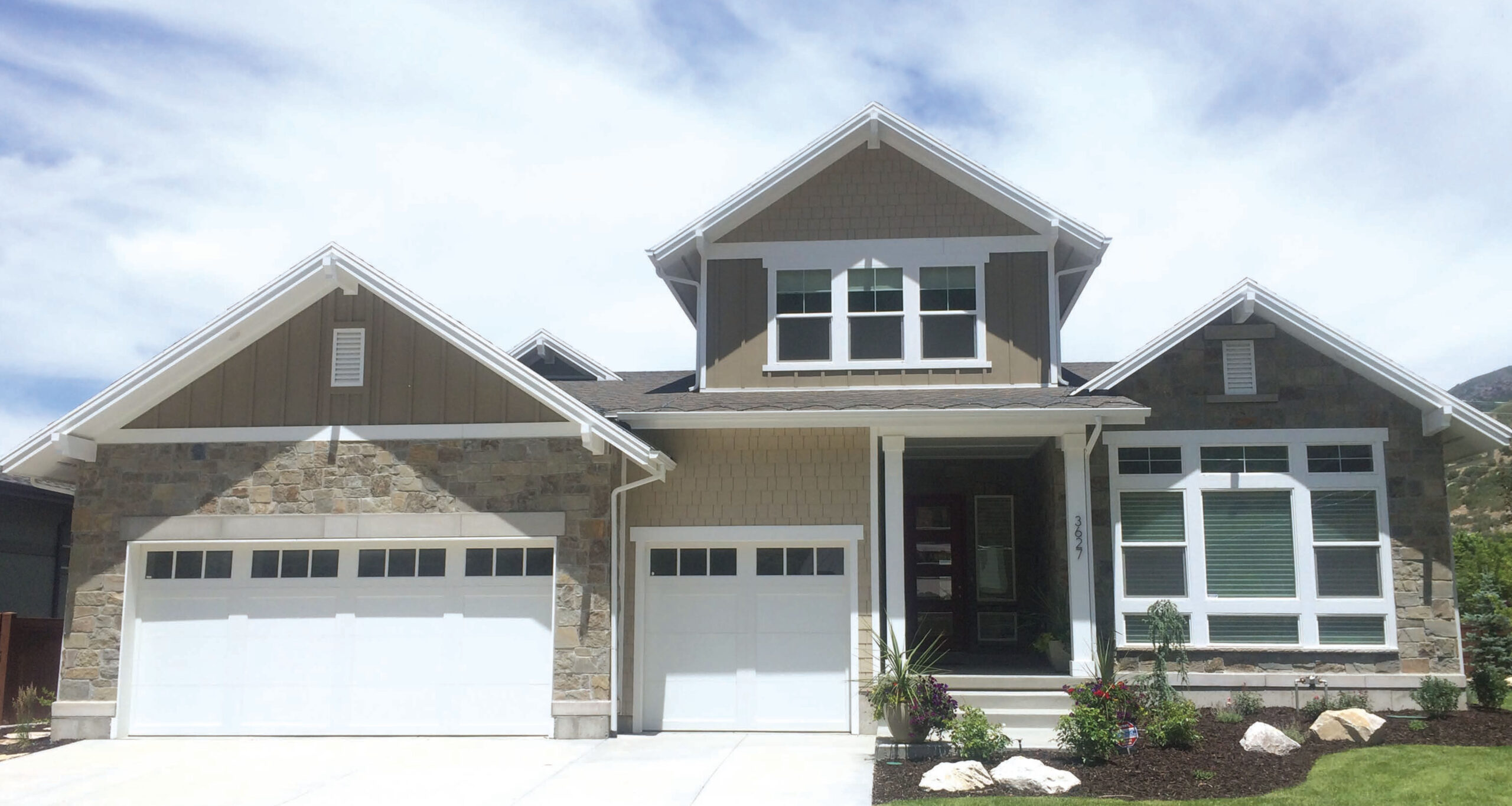In his more than 30 years as a residential building contractor, Jim Iredale focused much of his career on constructing code-built custom homes. That changed in 2012 when he had the opportunity to work on a very high-end project that was designed to meet passive haus (house) standards, and a devotee was born.
Details »Insulation Institute Blog
Posts Categorized: Energy Efficiency
Want More of a Good Thing? Switch Your Trusses
By: Matthew Brown, CGP, APA Engineered Wood Specialist
Insulation can increase a home’s energy efficiency, but only if it’s properly installed. Batt insulation installed as per manufacturer instructions should perform at its stated value, but R-value can decrease if it’s compressed in tight spaces.
In roofing assemblies, conventional trusses can restrict insulation space above the exterior wall top plate, resulting in compressed insulation. Raised-heel trusses can provide a significant boost to the insulating power of a home.
Details »Right-Sizing AC in High-Performance Homes
Some people think that the idea of a high-performance building is a new concept, but it has been around for some time now. As defined in the Energy Policy Act 2005, a building that “integrates and optimizes all major high-performance building attributes, including energy efficiency, durability, life-cycle performance, and occupant productivity” is a high-performance one.
Today, many builders have already applied the principles of a high performance into their homes, and homeowners are now enjoying the benefits of living in a place that sets the bar much higher for energy efficiency, comfort, durability, indoor air quality, and the use of sustainable products.
Details »Energy Data Gains Traction in Home Listings
What impact will energy data for 110 million homes have on the energy efficiency industry?
By: Ryan Meres, RESNET Programs Director
For more than a decade studies have consistently shown that home buyers want energy-efficient features, but few are aware of the impact those features have on energy cost. The average U.S. homeowner spends more on energy than property taxes and insurance, but energy is the only one of those three common expenses not considered in the mortgage process. The announcement and report released by the Rocky Mountain Institute (RMI) that real estate platforms have begun including energy information in their listings is a significant step toward reducing the barrier to the transparency of energy use in the home-buying process.
Details »2009 Called. It Wants Its Energy Code Back
As advocates for building energy efficiency, Insulation Institute and many other organizations support the development and adoption of model residential building energy codes like the 2015 International Energy Conservation Code (IECC). Unfortunately, code adoption is literally “all over the map,” in the United States. Twenty-two states have a version of the energy efficiency code that meets or exceeds the 2009 IECC. Ten states meet or exceed the 2015 code, and 12 states have no statewide code at all, according to the Building Code Assistance Project. For those who support energy code adoption, it can seem like an uphill battle to advocate for newer energy codes, particularly when there are lots of misconceptions about the purpose behind the codes.
Details »Our Insulation Field Trip
The Insulation Institute is committed to addressing and educating the market on quality installation, conducting training sessions and developing an extensive guide on how to get Grade I installation. Since we represent the insulation industry, we like to get out in the field from time-to-time and see how the products our members manufacture are installed.
So, when we had an opportunity to visit two Maryland homes currently under construction just after the insulation had been installed we jumped at the chance.
Details »5 Priority Air Sealing Locations for New Homes
Achieving an energy efficient, durable and comfortable home starts with framing and includes air sealing and insulation. Regardless of the type of insulation used, whole-home air sealing is a must to minimize air leakage and maximize thermal performance. It’s also an essential part of meeting new home airtightness requirements. As states adopt new, more stringent home energy efficiency codes, builders must redouble their efforts to ensure that new homes are properly air sealed. But where are the areas within the building that are leakier than others?
Details »Blow the Insulation, Not the Budget
Maximizing cost effectiveness is every builder’s goal and every home buyer’s expectation. Each year, an impressive group of builders is recognized by the U.S. Department of Energy (DOE) for their forward-thinking approaches to delivering Zero Energy Ready homes. The most exemplary of the annual winners achieve this extraordinary target while keeping costs in line. Utah-based Garbett Construction is a 2017 Housing Innovation Award winner, and its winning Elizabeth model delivers notably affordable high energy performance, using proven energy-efficient construction practices and economical blown-in fiberglass insulation.
Details »Free Grade I Training Coming to Four States
According to U.S. Department of Energy 20 percent home’s energy is wasted because the home is under insulated and improperly air sealed.[1] For builders, this can wreak havoc on productivity, resulting in call backs, jeopardizing code compliance, reducing HERS scores, and resulting in homes that are less energy efficient and comfortable for consumers.
Details »RESNET Unveils Water Efficiency Measure
Home buyers and owners aren’t just concerned about energy efficiency, they’re increasingly interested in the water efficiency of homes as well, due in part to double-digit increases in water costs over the past few years in many areas of the country. Growing interest in water efficiency has prompted Residential Energy Services Network (RESNET) to partner with the International Code Council to develop a national consensus standard for home water efficiency dubbed HERSH20. The standard will define how to calculate a rating index for home water efficiency.
Details »
